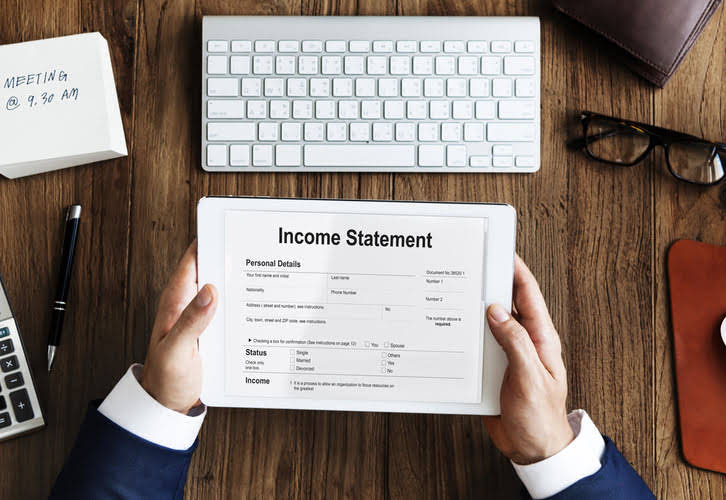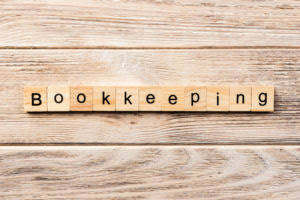
If the board of directors approves a 10% stock dividend, each stockholder will get an additional share of stock for each 10 shares held. After the 25 shares of treasury stock are sold, the balance in Treasury Stock becomes a debit of $900 (45 shares at their cost of $20 per share). The Paid-in Capital from Treasury Stock now shows a credit balance of unearned revenue $170. A corporation’s accounting records are involved in stock transactions only when the corporation is the issuer, seller, or buyer of its own stock. The corporation will go about its routine business operations without even noticing that there were some changes among its stockholders.

What is the relation between shareholders’ equity dividends?
Stockholders’ equity is to a corporation what owner’s equity is to a sole proprietorship. Owners of a corporation are called statement of stockholders equity stockholders (or shareholders), because they own (or hold) shares of the company’s stock. In terms of payment and liquidation order, bondholders are ahead of preferred shareholders, who in turn are ahead of common shareholders. Retained Earnings (RE) are business’ profits that are not distributed as dividends to stockholders (shareholders) but instead are allocated for investment back into the business. Retained Earnings can be used for funding working capital, fixed asset purchases, or debt servicing, among other things.
- The officers include the chief executive officer (CEO), the chief operations officer (COO), chief financial officer (CFO), vice presidents, treasurer, secretary, and controller.
- Companies may return a portion of stockholders’ equity back to stockholders when unable to adequately allocate equity capital in ways that produce desired profits.
- Therefore, you should always consult with accounting and tax professionals for assistance with your specific circumstances.
- Stockholders’ equity (also known as shareholders’ equity) is reported on a corporation’s balance sheet and its amount is the difference between the amount of the corporation’s assets and its liabilities.
- Many of the legal requirements imposed on a corporation do not apply to sole proprietorships.
What Is a Good Shareholders’ Equity Number?
One of the main financial statements (along with the statement of comprehensive income, balance sheet, statement of cash flows, and statement of stockholders’ equity). The income statement is also referred to as the profit and loss statement, P&L, statement of income, and the statement of operations. The income statement reports the revenues, gains, expenses, losses, net income and other totals for the period of time shown in the heading of the statement. If a company’s stock is publicly traded, earnings per share must appear on the face of the income statement. Stockholders’ equity is the remaining assets available to shareholders after all liabilities are paid.

Book Value of a Corporation
A stock split, such as a 2-for-1, means that every stockholder will have twice as many shares as was held previously. Accordingly, the market price per share after the split should be one-half of the market price existing prior to the stock split. The main reason for a stock split is to reduce the market price per share of stock. That part of the accounting system which contains the balance sheet and income statement accounts used for recording transactions. Some valuable items that cannot be measured and expressed in dollars include the company’s outstanding reputation, its customer base, the value of successful consumer brands, and Legal E-Billing its management team. As a result these items are not reported among the assets appearing on the balance sheet.

- To see a more comprehensive example, we suggest an Internet search for publicly-traded corporation’s Form 10-K.
- Also a stockholders’ equity account that usually reports the cost of the stock that has been repurchased.
- After a 2-for-1 stock split, the same stockholder still owns just 1% of the corporation (2,000 ÷ 200,000).
- Owners of a corporation are called stockholders (or shareholders), because they own (or hold) shares of the company’s stock.
- This and other summary accounts can be thought of as a clearing account.
- As a result, corporations rarely distribute all of their net income to stockholders.
This is an ownership share in a company that permits its holders to receive dividends and gives them voting rights in shareholders’ meetings. Aside from the ROE ratio, shareholders’ equity is also used to calculate ratios like the book value of equity per share (BVPS) and debt-to-equity ratio (D/E). In this article, you will get to understand the components of stockholder’s equity in the balance sheet, its calculation, and how it relates to the financial stability of the company. Generally a long term liability account containing the face amount, par amount, or maturity amount of the bonds issued by a company that are outstanding as of the balance sheet date. A current liability account that reports the amounts of cash dividends that have been declared by the board of directors but not yet distributed to the stockholders.

- For example, a company will have a Cash account in which every transaction involving cash is recorded.
- To illustrate this rule, let’s look at several transactions where treasury stock is sold for less than cost.
- It aids in evaluating the company’s financial ratios, fund sources and uses and overall financial progress.
- A term meaning behind, such as dividends in arrears, or something occurring at the end of a period, such as the recurring payment in an annuity in arrears.
- The items that would be included in this line involve the income or loss involving foreign currency transactions, hedges, and pension liabilities.
The total assets value is calculated by finding the sum of the current and non-current assets. Ultimately, shareholders’ equity is used to evaluate the overall worth of a company. But numerous components of the balance sheet calculation are needed to gain deeper insight into a company’s financial management. By calculating shareholders’ equity, an investor can determine if a company has enough assets to cover its liabilities, which is an important factor in deciding whether a company is a risky or safe investment.

Facilitate regular monitoring of shareholders’ equity
- Because, in the case of solvency, the amount that shareholders salvage is from the remaining assets, which is basically the stockholders’ equity.
- Many investors view companies with negative shareholder equity as risky or unsafe investments.
- If the corporation was profitable in the accounting period, the Retained Earnings account will be credited; if the corporation suffered a net loss, Retained Earnings will be debited.
- In case of liquidation or when dividends are being disbursed, preferred shareholders receive a payment first followed by holders of common shares.
- Conceptually, stockholders’ equity is useful as a means of judging the funds retained within a business.
- Understanding how it stockholders’ equity and what factors influence it will give you an idea of what other values to check when assessing a company’s financial status.
The amount at which the holder of preferred stock or bonds must sell the stock or bonds back to the issuing corporation. The call price might be the face or par amount plus one year’s interest or dividend. A document that discloses important information on bonds or preferred stock. Included in the indenture would be the call price, the actions that can occur if the company fails to pay the interest or dividend, etc.





